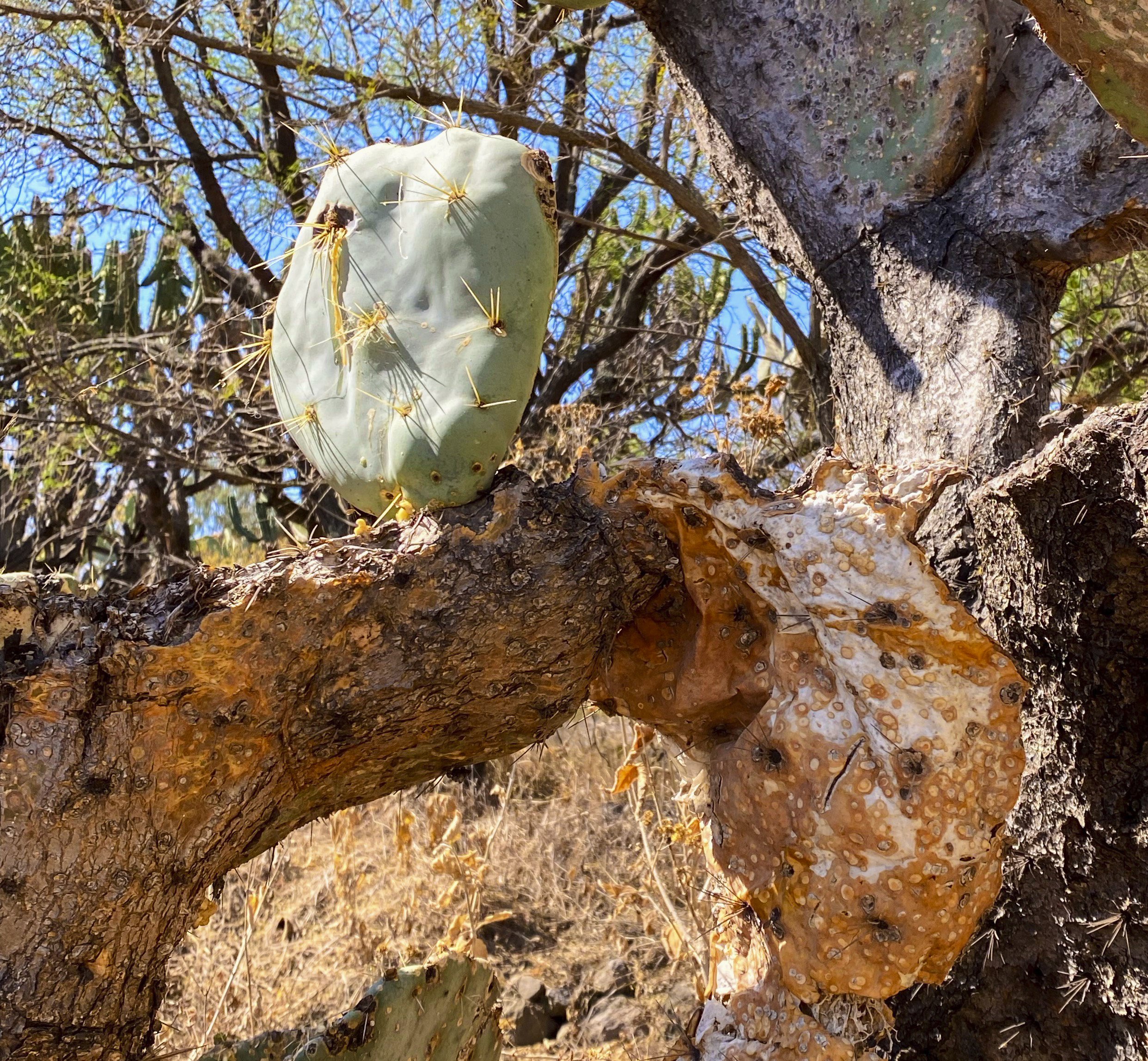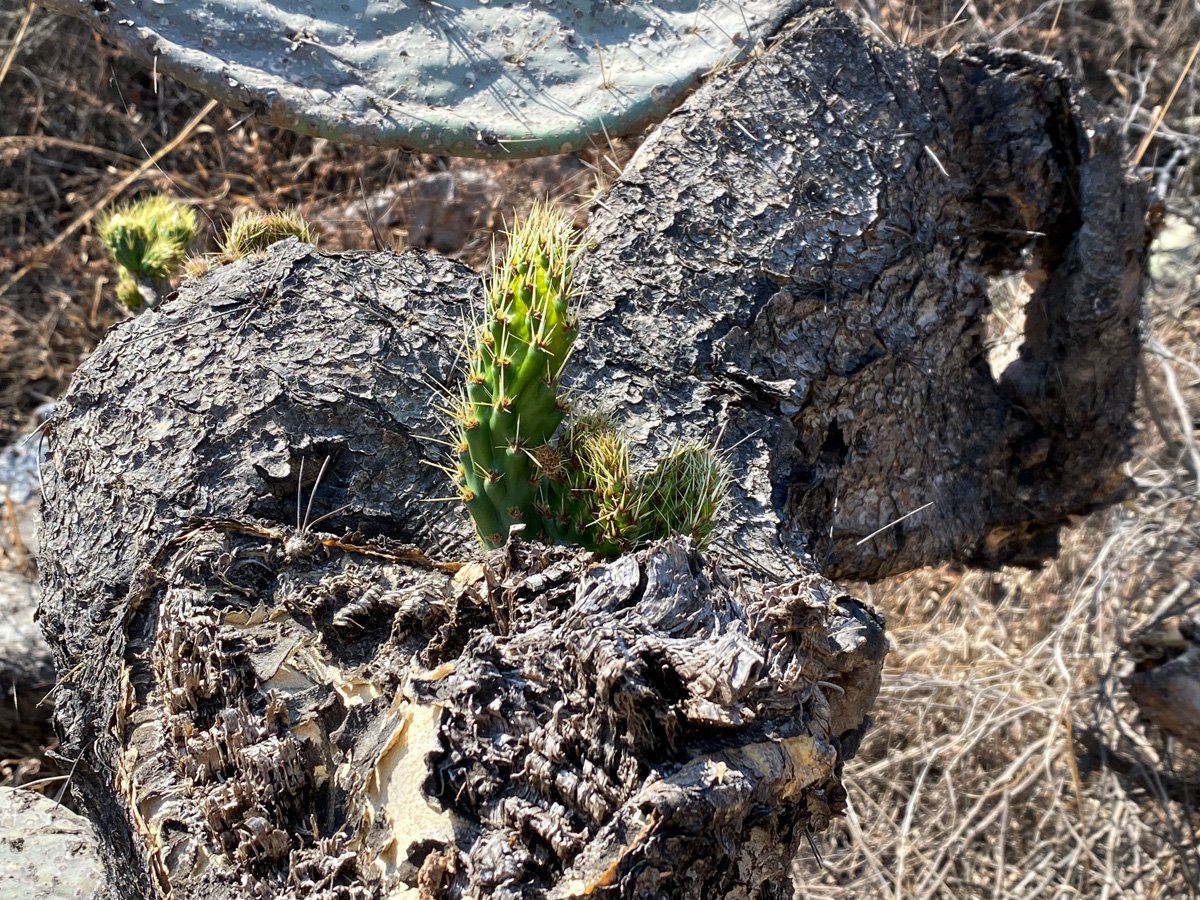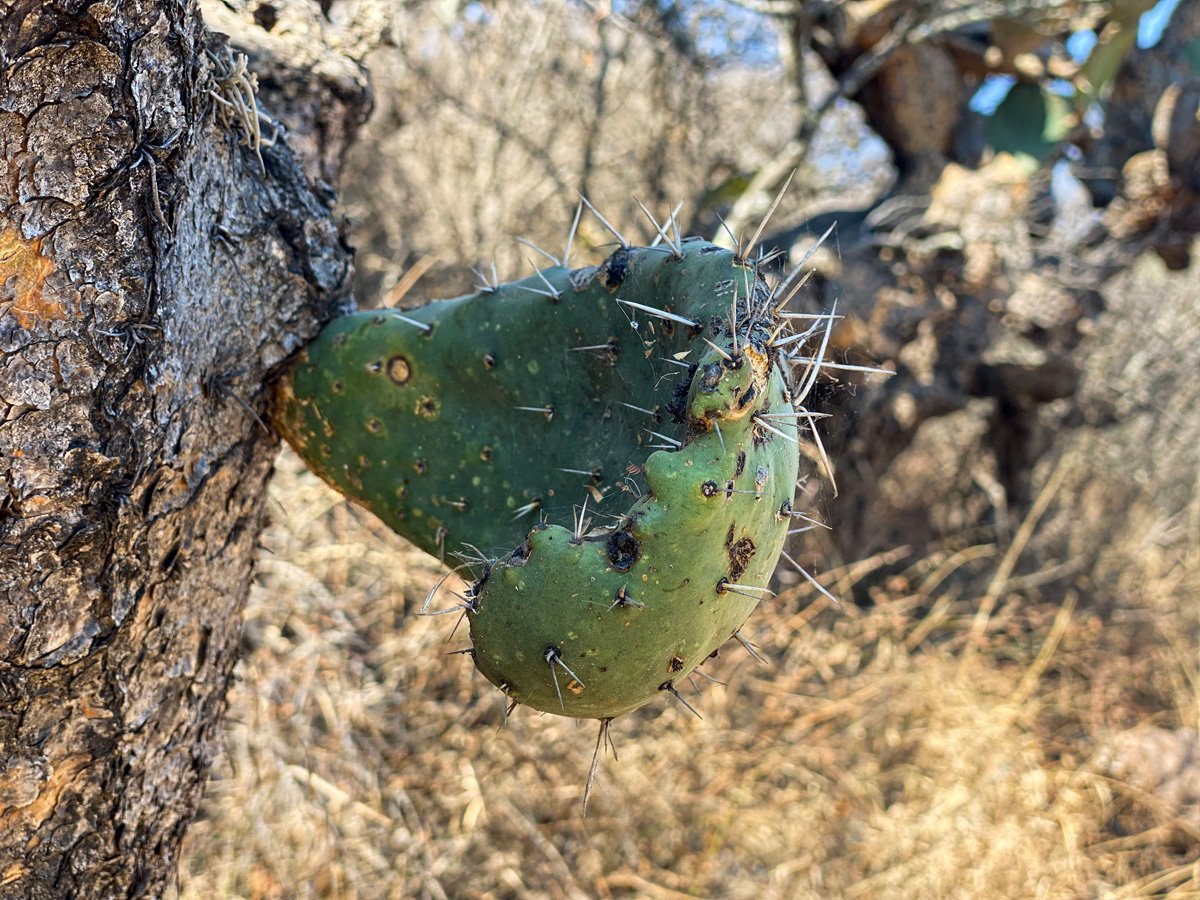A Spring Equinox in the Sierra Madre
Opuntia, aka Nopal, aka Prickly Pear
“In the war of sun and dryness against living things, life has its secrets of survival.” John Steinbeck
gulf frittlry and nopal
With the spring Equinox soon upon us, the promise of new life traditionally conveys hope and anticipation of what’s to come. For decades in New England, our family would relish in witnessing pearl white snowdrop flowers, cheery and colorful crocuses and later in April, daffodils all along our stone wall after a long winter. A miracle of nature after the blanketing snow.
In the high desert of Mexico’s Sierra Madre an inverse situation appears to take place. To my northern eye, the Equinox here is not the beginning of spring, but rather an extension of the dry but warm winter that relentlessly stretches on (unless you get a welcome afternoon storm). By June, though, summer rains will be transforming the landscape. Following this, all with green fields and wild flowers, autumn paradoxically resembles spring. As in the southern hemisphere, the seasons appear to be upside down.
One might not notice this in the historic town of San Miguel de Allende situated at 6000 feet, where bougainvilleas thrive throughout the year. Also, just in time for the Equinox, the sub-tropical Jacaranda trees (Jacaranda mimosifolia), native to Central and South America, and now enjoyed throughout the world — if the climate allows, are displaying their full lavender purple regalia. In the blink of an eye, one will see its flower petals dotting the streets.
Jacarandas and grasses
In contrast, a more gray and brown landscape, punctuated by hordes of decaying nopals (Opuntia or prickly pears) greets us in a natural, less-landscaped environment such as the campo or El Charco del Ingenio, a native plant botanical garden and nature preserve. In being recently captured by the nopal cactus’ textured and sculptural forms in its various stages of life, I came to appreciate its resilience. Nopals also assume a double identity: parts of the desiccated, skeleton-like “mother” plant morph into new life. Call it incarnation.
Not all look dead by any means. Young and edible clades (pads) as well as the “tunas”, an oval, smooth fruit that turn red, are now bursting into golden flowers. A perfect, serendipitous moment arose while I was photographing one. Suddenly before me was a Gulf Frittallary landing on a petal for a nibble.
Just the name, “prickly pear” is dualistic or rather oxymoronic. It inflicts both pain with its spines (thorns) but also offers a pleasant taste with its cooked young pads making for a nopalito ensalada and its tunas a jam. The time to harvest the nutritious young green pads is spring, i.e. now.




In the small slide show above, all the young nopals are growing from the ancient parent and not rocks. Coming back to my calling spring, fall, to be fair, the Huizache, a type of acacia, is also currently in bloom. With its bright yellow, button-shaped flowers exuding a sweet, heavenly scent, once used for perfume, it also makes makes for a harbinger of a new season. (Along with the Jacaranda its pollen, along with the Mesquite’s, is also a source of miserable allergies, as I’ve come to know).
Huizache in bloom
No matter the season though, appreciating flora is always possible in a conservatory such as the Charco’s that feature numerous rare and endangered plants. Below are two photos of the fascinating Pseudoombombax ellipticum.


To celebrate the spring Equinox, El Charco del Ingenio holds a yearly concert in its canyon.
El Chrco’s spring equinox concert attended by hundreds of people
Upon scrabbling through rocks and boulders to enjoy the concert, this single, small, delicate wild flower greeted me. Suddenly spring had returned as I remember it back north.
canyon wildflower
A most protected birds’ nest!








